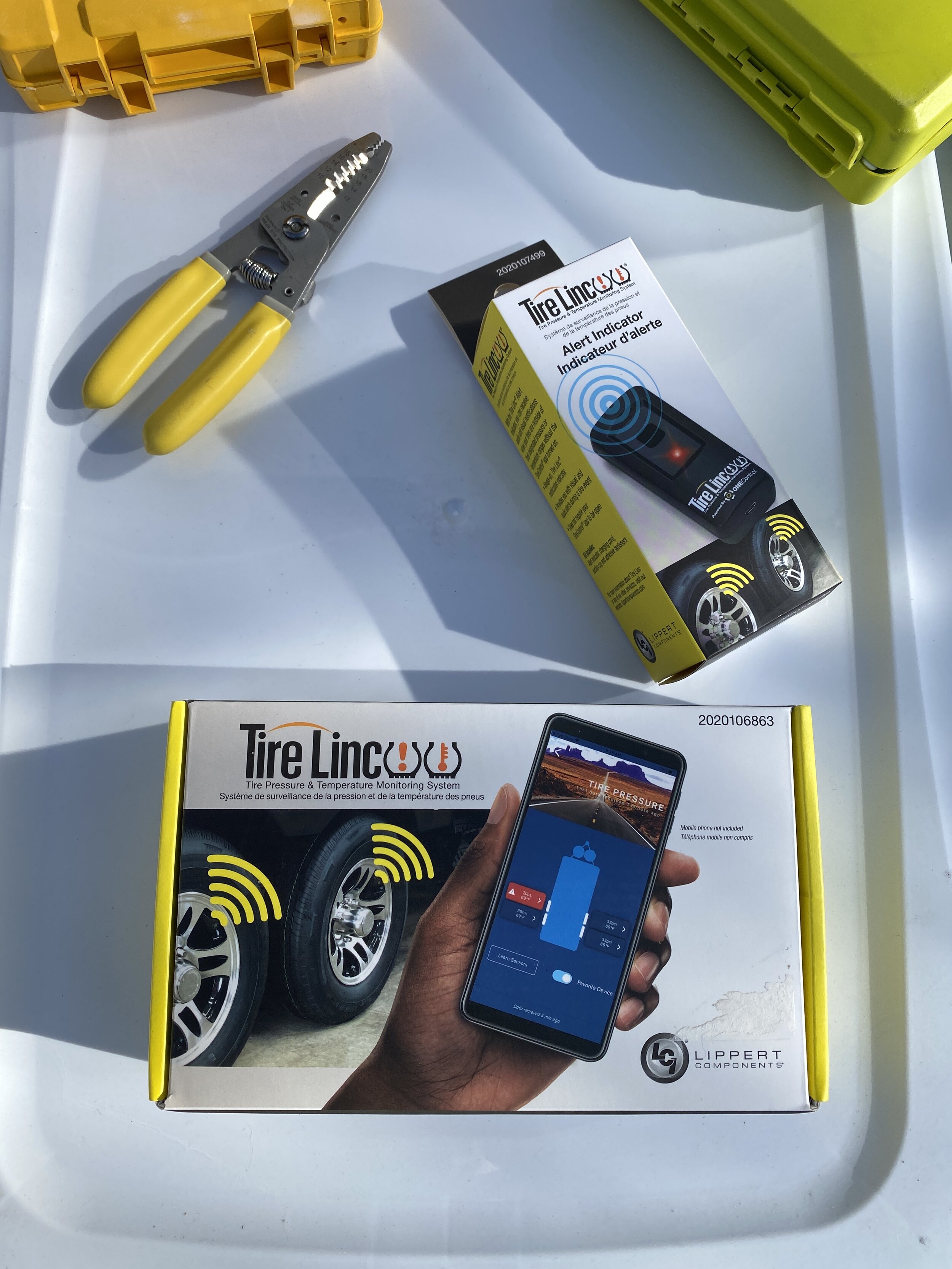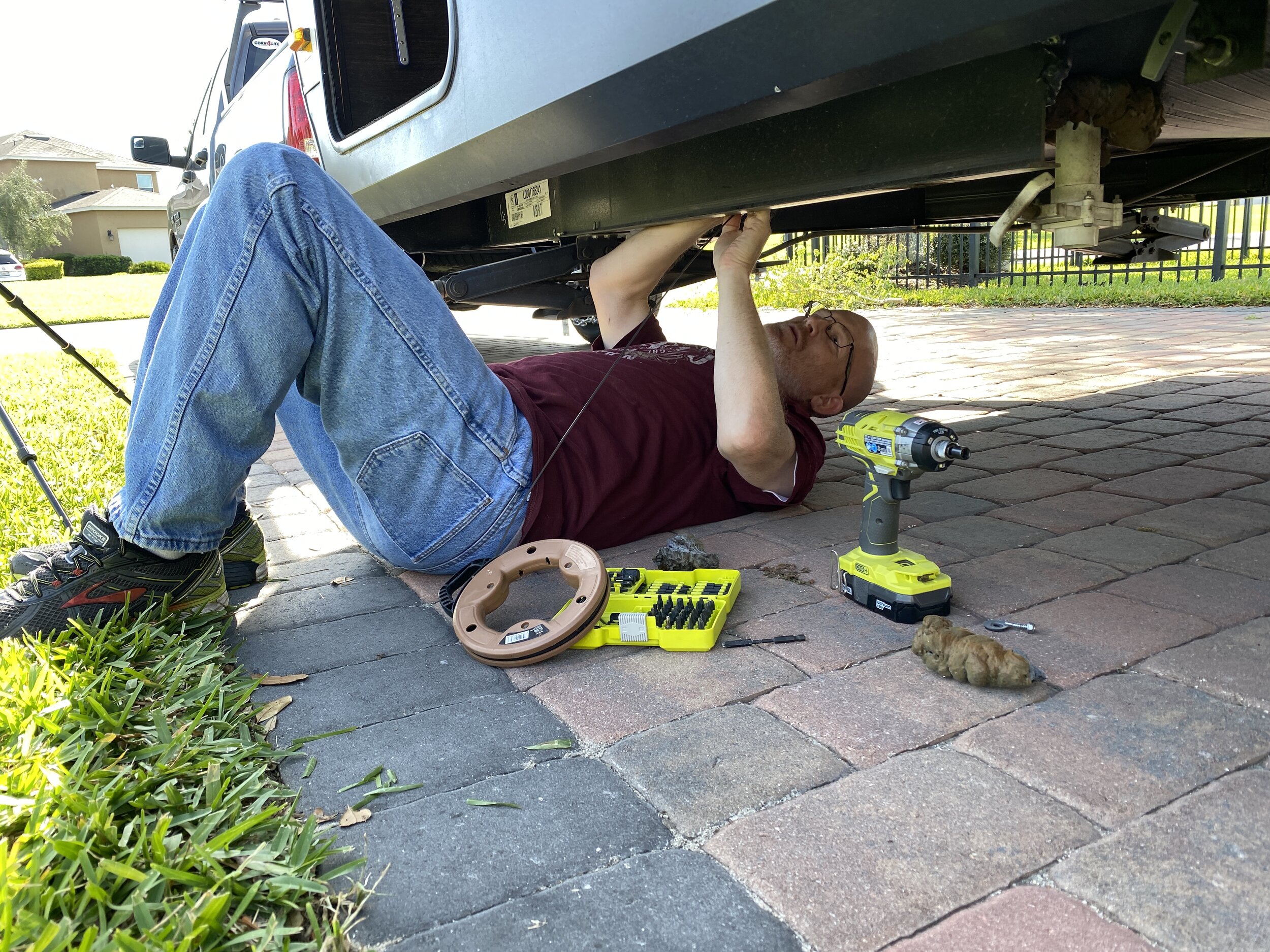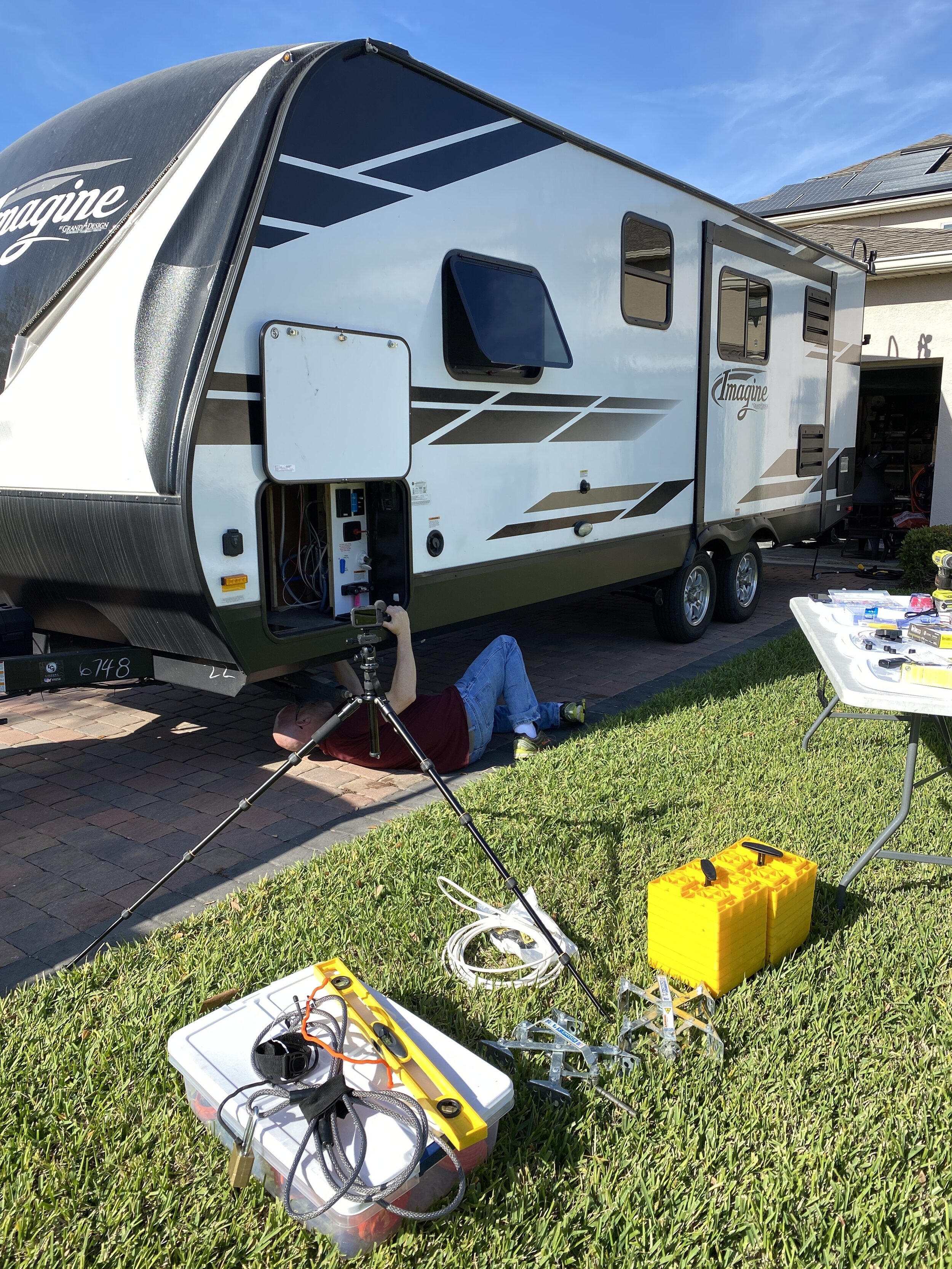Lippert Tire Linc Pressure Monitoring System Review
We were recently gifted a Tire Linc (TPMS) and Alert Indicator by Lippert for participating in a focus group. There are so many great reviews and testimonials about this system, so we were excited to upgrade our RV Set-up.
The installation video from Lippert made the process look easy. We were pleased, but always a bit skeptical about installs being oversimplified. Would Matt be able to install it that quickly and easily? Would we run into unknown difficulties? Spoiler alert – it really is just as easy an install as it looked in the video as long as you are comfortable with running wire and adding a fuse.
Ordering Process: We ordered right off the Lippert website. It was quick, easy, and the delivery was fast.
Equipment Needed: In addition to the Tire Linc and Alert Indicator ordered from Lippert, you will need a couple of items before you start the install.
15 Amp Inline fuse
Connectors (to connect to 12 Volt Source)
Black & Red 14 Gauge Wire
Wire Strippers/Crimper
Screws (Mount the docking station)
Drill
Installation Summary (The below instructions are not meant to replace the very detailed instructions provided with the Lippert product, but to give you a brief understanding of what is involved):
Estimated Time for Install: 30 – 45 minutes
Unbox the system and look at the equipment provided by Lippert. We watched a Lippert video before installing. We have now posted a video on our YouTube about our installation.
Mount the docking station inside the storage area.
Wire the docking station to the battery. We connected the 15 amp fuse to the docking station and then to the wires, which we ran out to battery using the same path that other wires are running. Our battery is located on the tongue of the trailer and the underneath storage area is at the very front of travel trailer, so the path was fairly easy and direct.
Install the sensors by screwing them on the tire valves of each tire. As you install, use the phone app to pair each sensor.
Last thing to do is pair and plug in the Alert Indicator in the cab of the truck. This will beep and alert you if there is an issue, even when you do not have your phone app open.
Matt installed this right before our week and a half trip through Florida and Georgia. The system worked as expected and we were able to monitor tire pressure the entire trip with no issues. The system did un-sync one time and we had to relink. We like that the app shows the tire pressure and is continuously updated. We also like that there is a separate alert indicator to immediately let you know if there is an issue even if your app is not open. Unfortunately, we did have the opportunity to fully test the alert indicator and can give a FULL review that it works. As Matt was returning the RV to storage after our trip, one of the RV tires blew out. He happened to have the window open and music off, so he heard the tire blow at the same time as the Alert Indicator went off. If you do not hear the blow out, the alert will save you precious time in reacting quickly and saving your RV from additional damage.



